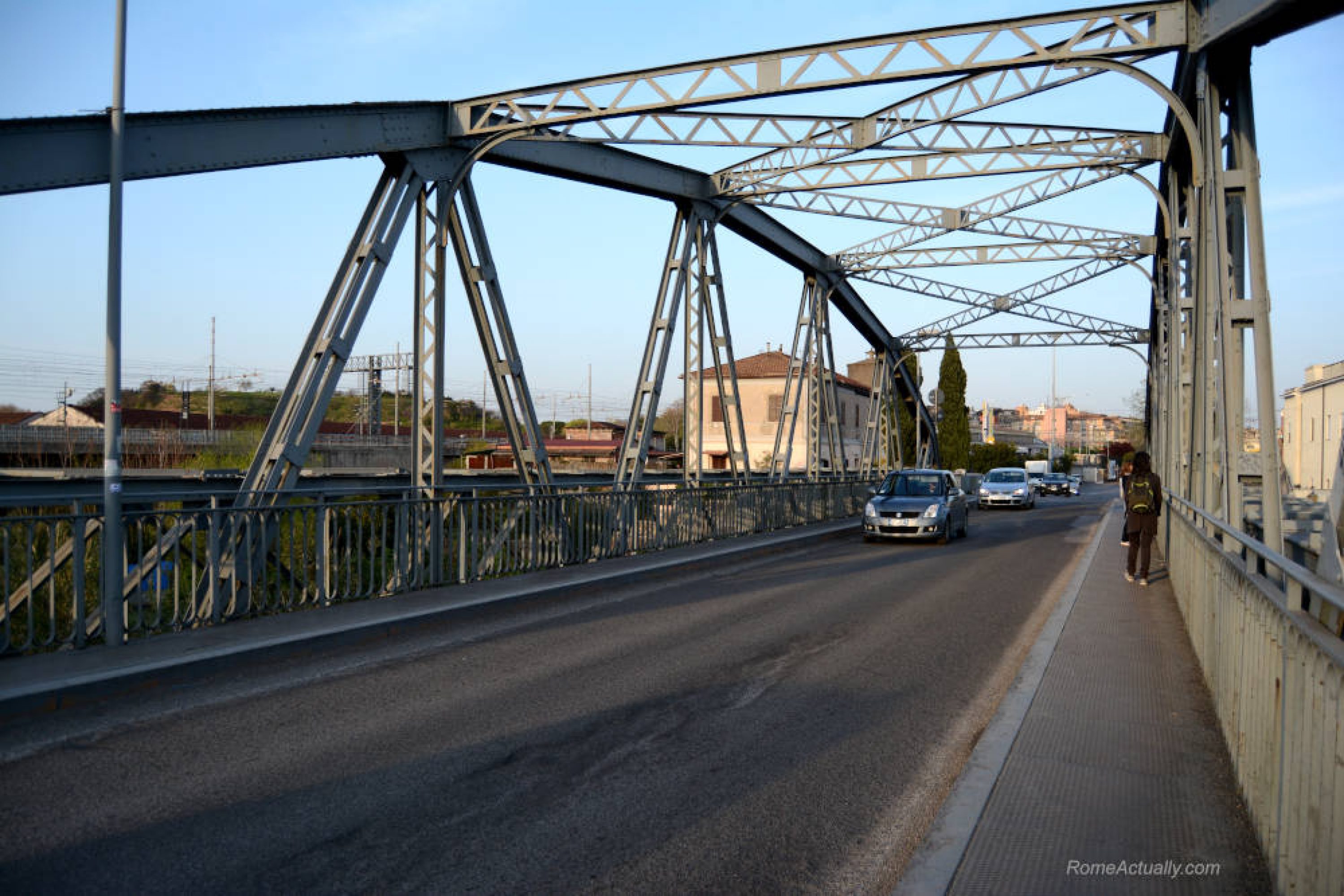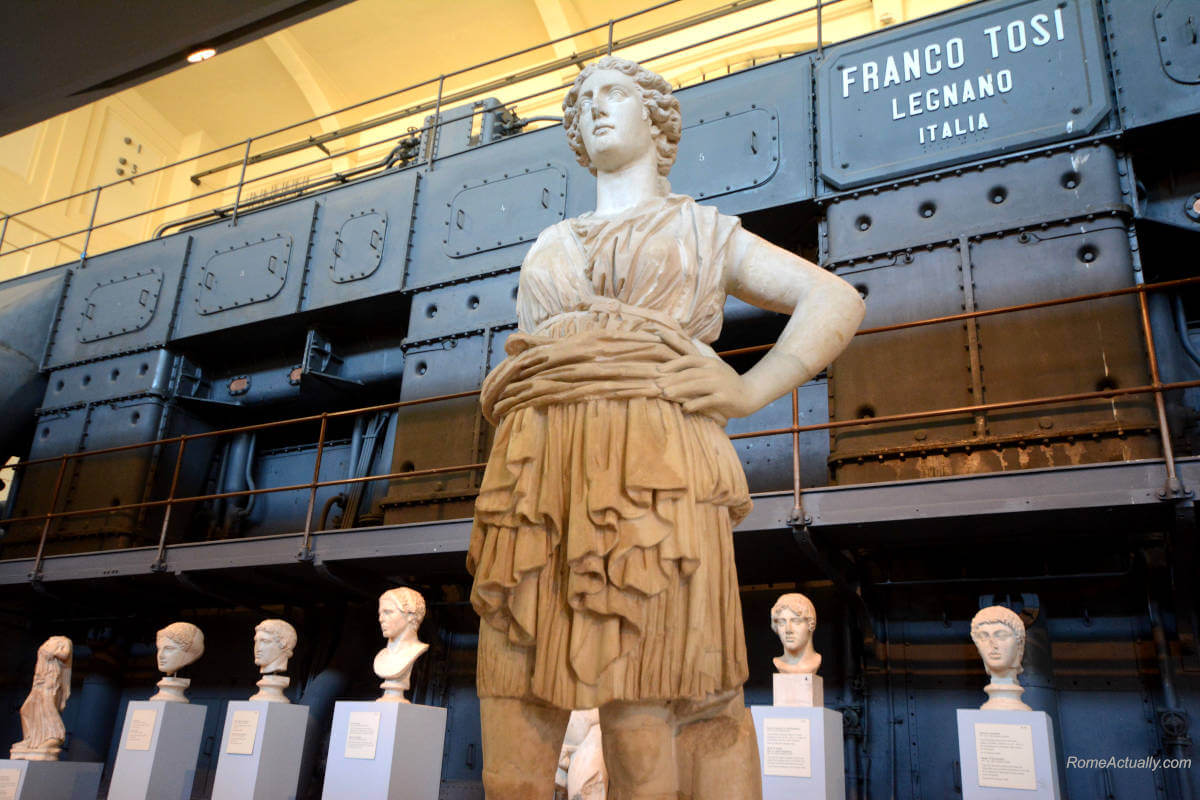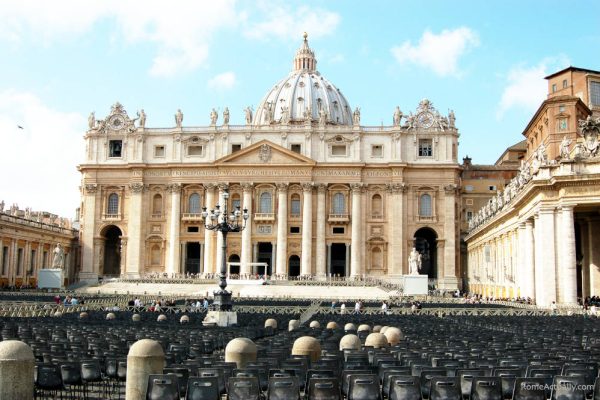One of my favorite Rome neighborhoods, there are so many things to do in Ostiense that you can easily spend here a whole day. Located between Testaccio and Garbatella quarters, in Rome’s Ostiense district you are bound to find history, art, and great restaurants.
Even though a fascinating neighborhood, Ostiense is hardly in a guided itinerary and definitely not in a classic one. You would probably not visit it if you are in the city for a day or two, but I recommend heading here if you are to explore Rome in a week.
Quartiere Ostiense is laid out along the initial part of the ancient Via Ostiense road, one of Rome’s most important streets, that has been connecting Porta San Paolo gate to Ostia since the 3rd century.
Originally, Via Ostiense was the natural extension of Via Salaria and a pivotal artery of some 30 km to connect Rome with the salt mines near the Tiber’s mouth and its most important port, ancient Ostia. The works for its construction started in 335 BC and required sophisticated engineering skills because the new road had to overcome the ascent with the Dragoncello hill and rise the street level compared to the surrounding marshland.
Ostiense road started around Forum Boarium and crossed Porta Trigemina, an important gate of the Servian Walls that while it doesn’t exist anymore, we know it was on the southeastern end of the Forum accessing Aventine Hill. From here, Via Ostiense carried on along the slopes of Aventine Hill before dividing into at least two branches.
With the building of the Aurelian Walls, Via Ostiense was directed to run under Porta Portuense gate, today’s Porta San Paolo. In the Later Roman Empire, from the 4th century on, the trade started to fade and Ostia’s port began its decline. This caused a downturn also for Via Ostiense, overshadowed by Via Portuense.
Up until the beginning of the 20th century, Ostiense has been a rural area mainly devoted to farming and agriculture.
We have to wait until 1909 with Sanjust urbanization planning and the local administration led by Ernesto Nathan to witness a whole revolution in Ostiense. Initially known as the quarter of the gasmen and tanners due to the high concentration of these two professions, a heavily industrialized district started to take shape.
This is also the time pivotal constructions were erected such as the river port (porto fluviale), Centrale Montemartini, Rome’s biggest powerhouse, the general warehouse (Magazzini Generali), and the Gasometer. All these places are still visible and some, like Centrale Montemartini, make for some of the best things to do in Ostiense.
Today, Ostiense is a very trendy neighborhood with a lively food scene, plenty of hip openings, and vibrant cultural life.
What To Do In Rome Ostiense Neighborhood
Visit San Paolo Fuori Le Mura Basilica
Despite its importance in Christendom, St. Paul Outside the Walls Basilica is a little-visited church in Rome. My guess is that the reason is that it’s far from the city center and from the most classic landmarks.
So if you only have one day in Rome, I understand it’s pretty hard to squeeze this too into your bucket list. But if you can stay longer, this important basilica is one of the top churches to visit in Rome for its history and for being built on the site where St. Paul was martyred and then buried. This is what made it a busy pilgrimage destination and what led Emperor Constantine the Great to build the first San Paolo Basilica in 324.
While it’s not exactly in the city center, it’s pretty easy to reach using Rome public transport as it’s close to San Paolo metro station (line B). St. Paul’s Cathedral is a perfect starting point for exploring this fascinating district and one of the first things to do in Ostiense.
Make sure you read our post about the most important churches in Rome.

See the Gasometer
One of the best things to do in Ostiense is to explore its recent, yet bygone industrial past. There is actually more than one gasometer, even though you will first see the main one as it is very tall and stands out among the others.
However, it’s pretty well connected with the local public transport, so if you have even three days in Rome, you can try to make a quick visit.
In the very heart of the Ostiense district, you will spot the Gasometer pretty quickly when you approach Via Ostiense and Via del Commercio from San Paolo Basilica. Built in 1936, it’s only one of the contemporary historical vestiges of Rome’s quarter symbol of modernity, productivity, and creativity.

Visit the vestiges of Rome’s industrial archaeology
Not only the gasometer but also Magazzini Generali, the buildings of factories, the important fish market, and military stations, make seeing the vestiges of Rome’s industrial archaeology one of the very best things to do in Ostiense.
Centrale Montemartini is the only place that was turned into a museum, while the others are mainly closed and can be viewed from outside. The gasometer is sometimes used as a venue for live concerts.
The whole neighborhood is a fascinating open-air museum displaying the relics of Rome’s recent past and the results of the urban planning of 1909 that created Ostiense as the production and industry district in south Rome.

Duck into Centrale Montemartini
Centrale Montemartini was the main power plant in Rome producing electricity and is now an archaeology museum. If you are exploring Ostiense, don’t miss it as it is a fascinating display of 20th-century factory machinery and Roman and Greek statues from the Capitoline Museums.
The museum is divided into different rooms and areas, each with different machines and different classic sculptures. In one of the areas, you can even see a large piece of the mosaics forming the floor of the Horti Sallustiani, one of ancient Rome’s largest parks and now one of Rome’s hidden gems. This is one of my favorite things to do in Ostiense, I never miss bringing my friends who come to visit.
- Address: Via Ostiense 106
- Opening hours: Tuesday to Sunday 9 am-7 pm, closed on Monday, January 1st, May 1st, and December 25th.
- Entrance fee: 10€

See the Ostiense street art
The old buildings belonging to Rome’s industrial past, buildings of factories, former barracks, and historic stores and warehouses have been spruced up with a project by several Italian and international street artists.
Ostiense District is an initiative that aims at giving some color and contemporary creativity to a working-class neighborhood that has always been the expression of modernity in Rome since its creation in 1909. Stroll around the district to see the beautiful works of Ostiense street art.

Cross the Settimia Spizzichino Bridge
The overpass connecting the Ostiense and Garbatella districts has a very modern and futuristic shape. From afar it looks like a cobra, and both day and night it’s a fantastic subject for photography fans.
The bridge, inaugurated in 2012 after 3 years of construction, has been named after Settimia Spizzichino, the only woman who survived the Nazi raid on the Jewish quarter in 1943 and Auschwitz concentration camp.

Make sure you read our post on the most impressive and famous bridges in Rome.
Venture to Garbatella Lots
Both Ostiense and Garbatella are working-class neighborhoods, but the latter probably retained more of its origins and traditional spirit. This neighborhood was created in the 1920s when Italy was ruled by Mussolini and was meant to be the district where the lodgings of the workers employed in several Ostiense factories, companies, markets, and warehouses were located.
The design of the Garbatella Lots was inspired by British urban planning and still today they retain their original charm of traditional working-class dwellings. And in line with tradition, here you can also find lovely restaurants for a hearty Roman meal.
Some of the most popular eateries include Tanto Pe’ Magna’ (Via Giustino de Jacobis 9), Osteria dei Pazzi (Via Enrico Cravero 22/24), Trattoria Dar Moschino (Piazza Benedetto Brin 5) and Il Ristoro degli Angeli (Via Luigi Orlando 2), great in the nice season when they put their tables outside.

Enjoy a traditional meal
Whether you are looking for new trends or traditions, Ostiense has you covered. If you are in Rome for only two days and are venturing out of the city center or you have booked your hotel in Ostiense, you might want to try some traditional Roman dishes.
Among the many restaurants in the Ostiense neighborhood, I suggest the lovely Trattoria Pennestri (Via Giovanni da Empoli 5). It’s fairly new on the scene and while you can order local dishes made according to tradition like carbonara or amatriciana, you will also find Italian dishes prepared with a contemporary twist and the personal creativity of the chef.
We tried many of their dishes, and both those inspired by the tradition and the original chef’s creations were pleasant experiences.
Refresh with some nice gelato
It might not be the best gelato place in Rome as it’s not artisan and doesn’t include all fresh ingredients, but Gelateria La Romana in Via Ostiense will make for a pleasant stop within your Ostiense sightseeing, especially if it’s summer and hot.
With a huge array of flavors, pretty much everyone will find their favorite. This Bologna-born gelato chain is strong in its creams and strives to reproduce much of the taste of the tradition with flavors such as “biscotto della nonna” (grandma’s cookies) or international allusions such as dates-flavored double caramel for an Arab touch, pastel de nata from Portugal, dulche de leche from Spain, or Sacher from Austria.
La Romana gelateria is located very close to Via del Porto Fluviale, so great if you are chasing the local street art as well as exploring the city’s industrial history.
Visit the Transport Museum
Polo Museale dei Trasporti is truly a hidden gem I discovered by chance one day when I was too early for my train to Ostia Antica. The railway Ostia Lido departs from Piramide/Ostiense and right next to the platforms is a small garden displaying an absolutely charming collection of old means of transportation.
You will see old buses, trams, and small trains including the famous electric train 404 “Termini-Cinecittà” used in the set of Roberto Rossellini’s movie Roma Città Aperta, and locomotive 05, the first train to be fully restored after being heavily damaged during WWII.
See Porta San Paolo gate
Huge and majestic, Porta San Paolo is a 3rd-century gate of the Aurelian Walls from where Via Ostiense departs to connect Rome to Ostia port. Its original name was Porta Ostiensis, which changed into Porta San Paolo after the Christianization of the Roman empire and its proximity to the Basilica of Saint Paul Outside the Walls.
While not in the immediate city center, Ostiense has been an important area of Rome since the building of the Via Ostiense road. It goes without saying that Porta San Paolo gate has witnessed crucial historical events.
Some of the milestone episodes that happened across this gate include the invasion of Rome by the Ostrogoths in 549 and the fall of Rome to the German army in 1943 after the heroic battle and resistance of the 21st Regiment of Granatieri di Sardegna (Sardinia’s Grenadiers) military unit and other branches of the Italian army.
Visit Testaccio
Once you are done with the cool places to visit in Ostiense, make your way to another Roman neighborhood where you can feel the city’s most authentic spirit. Testaccio shares much of history and destiny with Ostiense.
In Testaccio, in fact, was the most ancient river port used to carry goods such as oil, wine, wheat, and building material from the other provinces to the city of Rome. Emporium, Testaccio’s port we can still view the ruins of which, fell into disuse when the new port of Ostiense connected Rome with ancient Ostia.
In more modern times, Testaccio remained a working-class area like Ostiense in what it was the location of Rome’s main slaughterhouse (today a museum and cultural center), a large daily market, and the residence for many citizens working in Ostiense’s factories.
From Via del Porto Fluviale and Via delle Conce, you will find one of the most iconic places to visit in Testaccio, the ancient Pyramid of Caius Caestius, standing tall next to the Protestant Cemetery and Porta San Paolo gate.
See Ponte dell’Industria Bridge
Known also as Ponte di Ferro (iron bridge), Ponte dell’Industria was built in 1863 and connects Ostiense with the neighborhood of Portuense, more precisely, Via del Porto Fluviale to Via Antonio Pacinotti.
One of the most famous bridges in Rome, the materials to build Ponte dell’Industria were iron and cast iron (hence its moniker), it’s 131 meters long and was actually made in the United Kingdom.

Inaugurated by Pope Pius IX in September 1863, at first, Ponte dell’Industria was exclusively devoted to trains until 1910, when they built the adjacent brickwork bridge for the trains and the original Ponte di Ferro was left to cars and pedestrians.
Today, Ponte dell’Industria is run by thousands of cars, and I admit, we are not fans of driving through it because it’s extremely narrow. It can be crossed on foot and this is probably a more enjoyable experience also because only this way you can enjoy the view of the river, the Gasometer, and the two neighborhoods.
WANT TO READ IT LATER? PIN IT TO YOUR BOARD!







This is great! We are travelling next month and looking forward to exploring Ostiense!
It’s a fascinating neighborhood!